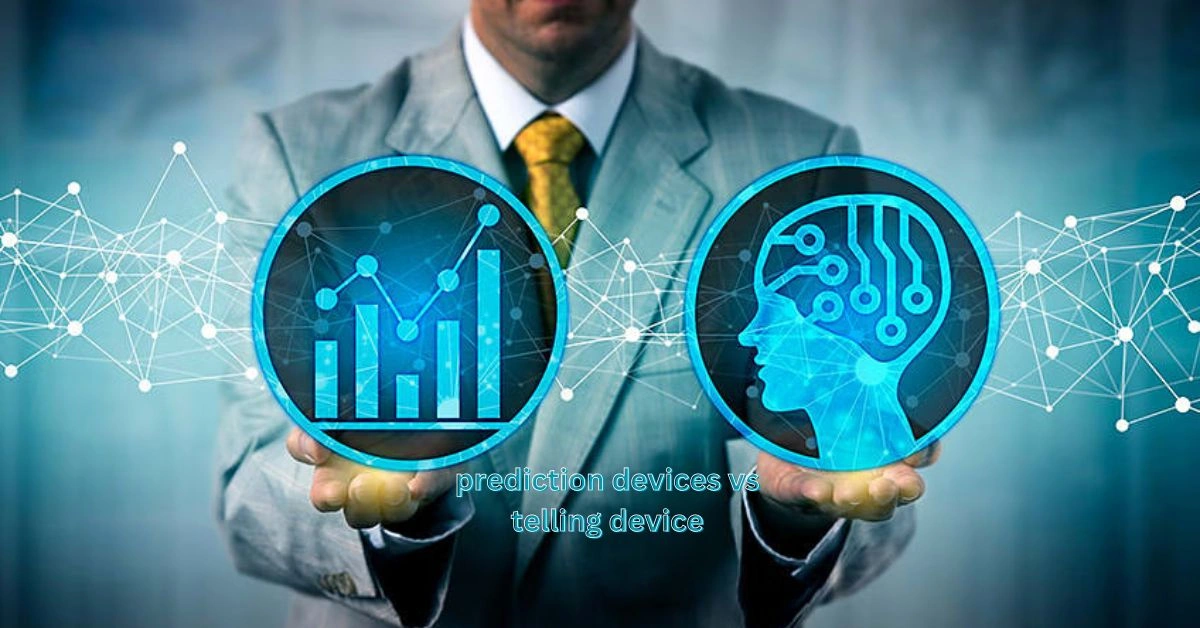Introduction to Prediction Device and Telling Device
In a world driven by technology, the tools we use to navigate our lives can significantly impact our decisions. Two such tools on the rise are prediction devices vs telling device. While they may seem similar at first glance, their functions and applications differ greatly. Do you need insight into what might happen next? That’s where prediction devices come in. Or perhaps you’re looking for reassurance or guidance based on past experiences—telling devices have you covered. Understanding these key differences will help you choose the right tool for your needs, ultimately enhancing your decision-making process in various aspects of life. Let’s dive deeper into how each device works and what makes them unique!
How do Prediction Devices work?
Prediction devices utilize advanced algorithms and data analytics to forecast outcomes. They analyze vast amounts of historical data, identifying patterns that might not be immediately apparent.
These devices often employ machine learning techniques. By continuously processing new information, they refine their predictions over time. This adaptability makes them particularly useful in fields like finance or healthcare.
For instance, a prediction device used in stock trading can assess market trends and economic indicators to suggest potential investment opportunities. Similarly, weather prediction models rely on atmospheric data to issue forecasts days or even weeks ahead.
The accuracy of these predictions hinges on the quality of input data. More reliable datasets lead to more precise outcomes, enhancing decision-making processes across various industries.
How do Telling Devices work?
Telling devices operate on a straightforward principle: they provide information based on fixed data inputs. Imagine a simple thermometer; it measures temperature and displays the reading without any interpretation or prediction.
These devices often rely on sensors to capture real-time data. For instance, a telling device in weather forecasting might display current rainfall levels or humidity percentages. It gives users precise facts about their environment at that moment.
Moreover, telling devices usually incorporate user-friendly interfaces. This makes it easy for anyone to access the information quickly. Whether it’s an app showing stock prices or a digital clock displaying time, clarity is key.
In essence, these tools are all about delivering what is known—no guessing involved. They help individuals make informed decisions by presenting accurate and immediate insights into various situations.
Advantages of Using a Prediction Device
Prediction devices offer a range of benefits that can enhance decision-making. They analyze vast amounts of data and identify patterns, providing insights that might otherwise go unnoticed. This capability enables users to make informed choices backed by evidence.
These devices often leverage advanced algorithms, allowing for real-time updates. As circumstances change, so do the predictions, ensuring you stay ahead in dynamic environments.
Moreover, prediction devices can save time by streamlining processes. Instead of sifting through endless information manually, users receive concise forecasts tailored to their needs.
Another advantage is risk management. With accurate predictions at your fingertips, you can better anticipate potential pitfalls and take proactive measures to mitigate them.
These tools empower individuals and organizations alike to navigate complexities with confidence and clarity.
Advantages of Using a Telling Device
Telling devices offer a straightforward approach to information delivery. They provide clear, concise data without the complexities of predictions. This is especially beneficial for users who need immediate answers.
Another advantage lies in their reliability. Telling devices often rely on established facts and proven outcomes. Users can trust that the information they receive is grounded in reality.
User-friendliness is also a key feature. Most telling devices are designed with simplicity in mind, making them accessible for all ages. Even those unfamiliar with technology can navigate these tools effortlessly.
Additionally, telling devices serve as excellent educational resources. They convey knowledge effectively, helping learners grasp concepts quickly without unnecessary complications or guesswork.
Many people appreciate the instant feedback provided by telling devices. Whether it’s calculating numbers or finding definitions, results appear almost immediately—perfect for fast-paced environments.
Which Device is Right for You?
Choosing between a prediction device and a telling device often comes down to your needs and preferences.
If you thrive on data-driven insights, a prediction device may be more suitable. These devices analyze patterns and trends, helping you make informed decisions based on potential outcomes. They can be invaluable in fields like finance or health.
On the other hand, if you’re looking for immediate answers or guidance in everyday situations, a telling device might serve you better. It provides straightforward advice based on current circumstances without delving into future possibilities.
Consider how much uncertainty you’re comfortable with as well. Prediction devices embrace risk but offer strategic foresight, while telling devices provide clarity amid ambiguity.
Assess your goals and lifestyle when deciding which option aligns best with your approach to information gathering and decision-making.
Conclusion: Considerations for Choosing the Right Device
Choosing the right device ultimately depends on your needs and preferences. Both prediction devices vs telling device have their unique features, catering to different audiences.
Consider what you want from a device. Are you looking for insights into future trends and outcomes? A prediction device may be your best option. If you’re more interested in receiving straightforward information or narratives that offer clarity about current situations, then a telling device could serve you better.Think about the context in which you’ll use the device as well. Some environments may benefit more from predictive analytics, while others lean towards immediate storytelling capabilities.
Cost is also an important factor. Weighing the expenses against potential benefits can guide your decision-making process too.
Both types of devices have merits worth exploring—understanding their differences will help you make an informed choice tailored to your specific requirements.
Learn more about banking and financial services in our article on Chase Bank and Nguyen Nguyen in Henderson, NV.


